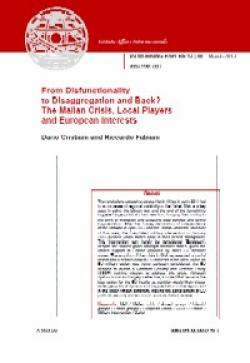From Disfunctionality to Disaggregation and Back? The Malian Crisis, Local Players and European Interests
The revolutions sweeping across North Africa in early 2011 led to an increase of regional instability in the Sahel. Mali is a key case in point: the Libyan war and the end of the Jamahiriya triggered a geopolitical chain reaction, bringing the country to the brink of implosion and stressing local political and ethnic fragmentation. After the Tuareg declaration of independence of the Azawad in April 2012 and the "narco-Jihadism" takeover of this area, the French-led military intervention in January 2013 pushed Jihadi forces back in their desert strongholds. This intervention can hardly be considered "European", despite the shared goals amongst member states, given the limited support to France provided by other EU member states. The eruption of the crisis in Mali represented a partial defeat and a serious blow to EU interests in the area. While an EU military option was never seriously considered, the EU decided to launch a Common Security and Defence Policy (CSDP) training mission to address this crisis. Although dysfunctional and largely ineffective, a united Mali remains the best option for the EU insofar as partition would likely trigger wider geopolitical dynamics of fragmentation in the region and in the wider African continent, making the achievement of EU political, security and economic aims as distant as ever.
-
Details
Roma, Istituto Affari Internazionali, 2013, 19 p. -
In:
-
Issue
1308 -
ISBN/ISSN/DOI:
978-88-98042-79-1
Introduction
1. From Benghazi to Bamako, through Gao: a three-level explanation of the Malian crisis
2. The domestic actors of the crisis
2.1 The Malian Army
2.2 The Islamist front
2.3 Pro-state Arab militias
2.4 Pro-state Songhai-Peul/Fulani militias
3. The EU and the Malian crisis
Conclusions
References



